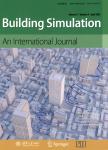Application and evaluation of a pattern-based building energy model calibration method using public building datasets
作者机构:Lawrence Berkeley National LaboratoryBerkeleyCAUSA National Renewable Energy LaboratoryGoldenCOUSA San Francisco Deportment of the EnvironmentSan FranciscoCAUSA
出 版 物:《Building Simulation》 (建筑模拟(英文))
年 卷 期:2022年第15卷第8期
页 面:1385-1400页
核心收录:
学科分类:081302[工学-建筑设计及其理论] 08[工学] 0813[工学-建筑学]
基 金:This research was supported by the Assistant Secretary for Energy Efficiency and Renewable Energy Office of Building Technologies of the United States Department of Energy under Contract No.DE-AC02-05CH11231
主 题:model calibration building energy modeling EnergyPlus building performance simulation monthly energy use
摘 要:Building performance simulation has been adopted to support decision making in the building life *** essential issue is to ensure a building energy simulation model can capture the reality and complexity of buildings and their systems in both the static characteristics and dynamic *** energy model calibration is a technique that takes various types of measured performance data(e.g.,energy use)and tunes key model parameters to match the simulated results with the actual *** study performed an application and evaluation of an automated pattern-based calibration method on commercial building models that were generated based on characteristics of real buildings.A public building dataset that includes high-level building attributes(e.g.,building type,vintage,total floor area,number of stories,zip code)of 111 buildings in San Francisco,California,USA,was used to generate building models in *** level energy use calibrations were then conducted by comparing building model results against the actual buildings’monthly electricity and natural gas *** results showed 57 out of 111 buildings were successfully calibrated against actual buildings,while the remaining buildings showed opportunities for future calibration *** to the pattern-based model calibration method are identified to expand its use for:(1)central heating,ventilation and air conditioning(HVAC)systems with chillers,(2)space heating and hot water heating with electricity sources,(3)mixed-use building types,and(4)partially occupied buildings.



